Exploring the Applications and Benefits of Steel Conduit
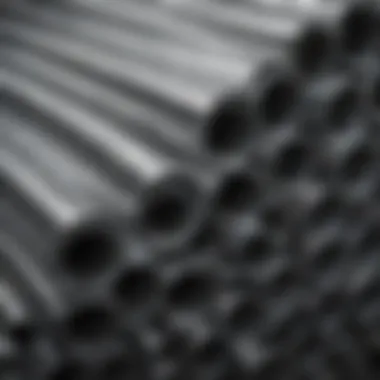
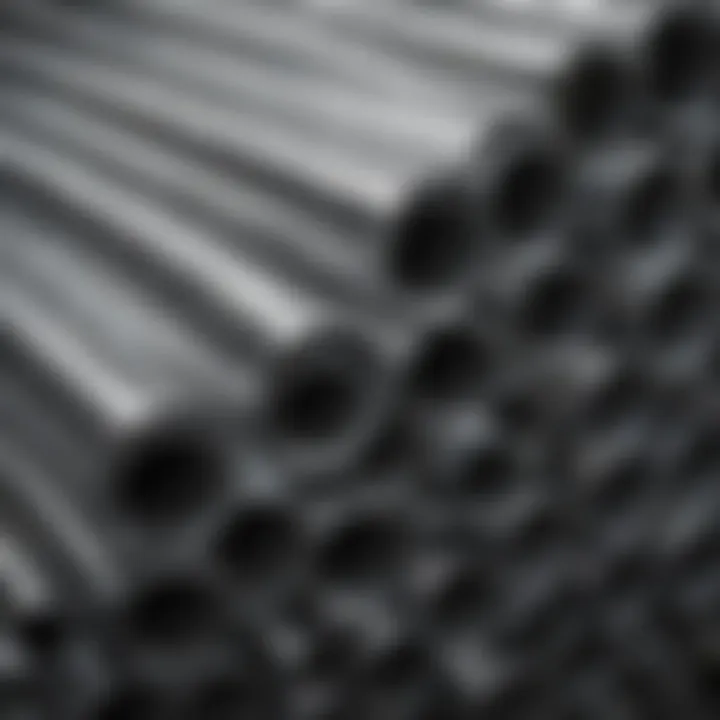
Intro
When diving into the realm of construction and home improvement, steel conduit emerges as a fundamental element. Known for its durability and adaptability, steel conduit plays a pivotal role in electrical installations and infrastructural frameworks. While many homeowners might overlook its importance, understanding its utility can greatly enhance both the safety and aesthetics of your living space. While some people might think of steel conduit as just something found in industrial settings, it's really a versatile material. Whether used for protecting sensitive wiring or providing structural integrity, it’s essential for any modern home or project.
Overview of Topic
The evolution of steel conduit in the home improvement industry is impressive. Originally used in commercial buildings, it's now become a staple in residential applications as well. Homeowners utilize various types of steel conduit, such as EMT (Electrical Metallic Tubing) and RMC (Rigid Metal Conduit), each catering to specific needs.
Importance of the Topic
Why should a homeowner care about steel conduit? For starters, it's about safety. Properly installed steel conduits can shield cables from physical damage, thus preventing electrical hazards. Additionally, they help in organizing the mess of wires often found behind walls, contributing to a cleaner look.
To put it plainly, utilizing steel conduit is like giving your home a protective armor while improving its overall appearance. It’s tough, looks good, and does wonders for reducing fire hazards associated with faulty wiring. In short, steel conduit is not just practical—it’s a smart choice for modern living.
Common Challenges and Solutions
Even though the benefits are clear, homeowners frequently face challenges when working with steel conduit.
Common Issues Faced by Homeowners
- Installation Complexity: Many people find the installation process tedious and complicated.
- Cost Factors: The initial investment can be higher compared to plastic alternatives.
- Maintenance Concerns: Ensuring the conduit doesn’t rust or corrode over time is essential.
Solutions and Tips to Overcome These Challenges
- Simplifying Installation: Consider hiring a professional if you're not comfortable with DIY projects. It might save you time and hassle.
- Budgeting Wisely: Look for quality options that balance cost and durability. Sometimes, it’s worth paying a little more for a longer-lasting product.
- Regular Inspections: Make it a point to inspect your conduit annually, looking for signs of wear or rust. A quick check can save you from future headaches.
Product Recommendations
When it comes to choosing the right steel conduit, a few industry brands stand out for their reliability and quality. Examples include:
- Southwire: Known for their Electroduct steel conduit, this brand is popular for its corrosion-resistant properties.
- Cantex: Their Rigid Metal Conduit is praised for its sturdy construction and easy installation.
- ABB: Offers quality EMT conduits that meet rigorous safety standards.
Benefits and Features of Recommended Products
- Durability: These brands' products can withstand harsh weather and physical impacts.
- Corrosion Resistance: Many options feature special coatings that prevent rust over time.
- Easy Installation: Some products help simplify the installation process, especially for DIY enthusiasts.
Step-by-Step Guides
If you're ready to implement steel conduit into your home, here’s a simplified guide to get you started.
- Plan Your Wiring Needs: Determine where you’ll need conduit and which type fits your project best (like EMT for light-duty situations).
- Gather Materials: Get all necessary tools—measure twice, cut once. Ensure you have conduit connectors, a hacksaw, and screws.
- Measure and Cut: Carefully measure the length needed and use your hacksaw for precise cuts.
- Install Conduit: Begin mounting the conduit along the predetermined path, using connectors to keep everything tight.
- Connect Wiring: Feed your electrical wires through the conduit, ensuring safety and organization.
- Final Check: Inspect all connections for security and make adjustments as necessary.
By following these steps, you can ensure a smooth installation process and enjoy the long-term benefits of steel conduit in your home. This protective solution not only safeguards electrical installations but also contributes to an aesthetically pleasing environment.
Prelude to Steel Conduit
Steel conduit plays a crucial role in both residential and industrial settings, serving as a protective channel for wiring in electrical systems. The reliability and robustness of steel conduit ensure the safety and integrity of electrical infrastructure, making it essential for homeowners and contractors alike. This introduction sets the stage for understanding how steel conduit not only supports electrical lines but also contributes to the overall durability of construction projects.
Definition and Overview
At its core, steel conduit is a tube made from steel that houses electrical wires and cables. It acts as a safeguard against physical damage, moisture, and various environmental factors. The versatility of steel conduit makes it a preferred choice for various applications, ensuring that wires remain insulated and organized. This characteristic protects circuits from hazards such as electrocution and fire, which can occur if wires are left exposed.
In more technical terms, steel conduit is categorized into several types, each designed to meet specific requirements. Rigid steel conduit is strong and considered the standard for many installations due to its high load-bearing capabilities. On the other hand, flexible steel conduit offers adaptability in tight spaces, making it easier to navigate around existing structures. Each type fulfills unique needs in electrical installations, thus forming the backbone of modern infrastructure.
History of Steel Conduit Use
The history of steel conduit dates back to the late 19th century when the electrical industry was rapidly evolving. In those days, the Chicago World’s Fair showcased many advancements in electrical wiring. Here, the first extensive use of metallic conduits was seen, spurred by the need for safer electrical installations to combat the risk of fires associated with wiring systems.
Over the years, as cities sprawled and the demand for electricity soared, regulations began to solidify. The gradual standardization of steel conduit in the early 20th century contributed to its popularity. Rigid steel conduit became ubiquitous in commercial buildings, and as the technology improved, its applications in residential construction expanded as well. Today, professionals in the field recognize that a well-installed steel conduit system is intrinsic to maintaining both safety and functionality in any building.
As we progress through this article, we will uncover the various types of steel conduits, their unique characteristics, methods of installation, maintenance procedures, and the extensive applications that highlight their significance in construction. By delving deeper, it becomes clear that steel conduit is not merely a material; it represents a commitment to safety, efficiency, and longevity in electrical architecture.
Types of Steel Conduit
Understanding the various types of steel conduit is essential for anyone looking to undertake construction or installation projects. Each type serves unique functions and comes with specific advantages that cater to different needs. Factors such as flexibility, durability, and resistance to environmental challenges must be considered before making a choice. Here’s a comprehensive view of the three primary types of steel conduit: Rigid Steel Conduit, Intermediate Metal Conduit, and Flexible Steel Conduit.
Rigid Steel Conduit
Rigid steel conduit (RSC) is the powerhouse of steel conduits. It's made from thick-walled steel, providing exceptional strength and durability. RSC is often used in industrial and commercial settings where robust protection is necessary. With its ability to withstand rough handling and environmental factors, it's considered the go-to choice for areas exposed to potential damage.
Here are several important aspects of RSC:
- Protection: It's designed to safeguard electrical wiring from damage. This is crucial in areas prone to collisions or heavy impacts.
- Longevity: Because of its sturdy nature, RSC tends to have a longer lifespan, reducing the need for frequent replacements, which can also save money in the long run.
- Installation Requirements: Installing rigid steel conduit may require more effort during installation, including threading and bending, but the end results are typically robust and reliable.
One might say that using RSC is like installing a fortified steel vault around your electrical wiring.
Intermediate Metal Conduit
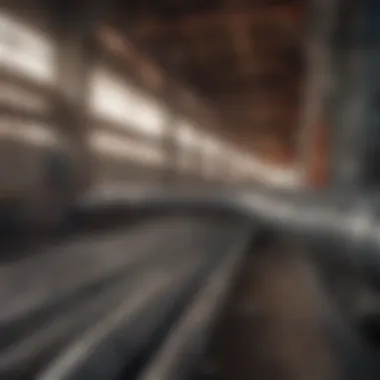

Intermediate metal conduit (IMC) serves as a bridge between the heavy-duty RSC and the more flexible conduits available. It's lighter than RSC but still provides decent strength and protection. IMC is often a favorite for light commercial use where some versatility is desired. It requires less labor-intensive installation compared to RSC, as it's easier to handle.
Here are key points about IMC:
- Weight: Being lighter allows for easier transportation and installation without compromising too much on protection.
- Cost-Effective: IMC can often be a more budget-friendly option, offering a good balance of cost and quality.
- Corrosion Resistance: Typically, IMC is galvanized, which makes it resistant to rust, a vital feature for outdoor and moist environments.
In many ways, IMC strikes a balance between durability and practicality, making it a popular choice.
Flexible Steel Conduit
As the name suggests, flexible steel conduit (FSC) brings a great deal of agility to the table. This type is especially handy when navigating through constrained spaces or making bends and turns in installations. Typically constructed with thin-walled steel, it’s designed to wrap around tight corners while still providing an acceptable level of protection.
Some notable features of FSC include:
- Versatility: It can be easily bent and adjusted to fit various layouts, making it ideal for intricate setups.
- Ease of Installation: Because it is flexible, FSC is often simpler to install and manipulate than RSC or IMC.
- Physical Protection: While it may offer less protection than RSC, it still provides adequate shielding for electrical wires in environments that aren’t subject to heavy impacts.
In a pinch, FSC acts like the Swiss Army knife of conduits, adaptable and easy to use.
Choosing the right conduit type is crucial. It can affect both safety and efficiency in your projects.
In summary, each type of steel conduit offers distinct advantages and considerations. Understanding these can ensure a well-planned installation that meets specific needs while adhering to safety standards.
Characteristics of Steel Conduit
The characteristics of steel conduit are the backbone of its utility in various applications. This section aims to shed light on the defining elements that make steel conduit a preferred choice among professionals dealing with construction and electrical installations. From its impressive durability to its resilience against corrosion, understanding these features will aid homeowners, contractors, and engineers alike in appreciating the significant benefits of steel conduit.
Durability and Strength
When we talk about durability, steel conduit shines like a beacon. Its strength is not just a mere boast but a reality that comes from the robust composition of steel. Unlike other materials, steel conduit can withstand substantial physical stresses without bending or breaking. This quality becomes a crucial factor in environments that demand resilience, such as industrial sites or construction zones.
Imagine trying to maintain electrical wiring in a bustling factory. The constant motion and heavy machinery can be rough on installations. Steel conduit not only protects the wiring inside but also ensures that the structure can handle impacts that would cripple lesser materials. This longevity means fewer repairs and replacements, offering a cost-effective solution in the long run.
"Choosing steel conduit is like investing in a sturdy safety net; it assures you that your crucial electrical systems are fortified against the unpredictable."
Corrosion Resistance
In the world of construction, corrosion is the silent killer of structural integrity. Steel conduit is often treated with various coatings to enhance its corrosion resistance, making it suitable for use in diverse environments, be it coastal areas where salt air can be corrosive, or regions that experience humidity.
Take the example of a home near the ocean; the constant exposure to moisture can spell disaster for many materials. However, with galvanized steel conduit, you're getting a layer of protection that actively combats the rust that arises from such conditions. Homeowners can rest easy knowing their electrical infrastructure is safeguarded against decay due to environmental factors. This ability to withstand corrosion extends the lifespan of installations and minimizes maintenance costs—which is always a win-win for property owners.
Weight Considerations
Let’s talk about weight. The weight of steel conduit can sometimes raise eyebrows, especially when considering transport and handling during installation. However, it’s important to remember that with weight comes strength. Rigid steel conduit may be heavier than its PVC counterparts, but this weight adds to its structural integrity.
Consider a scenario where electrical runs are required through a multi-story building. Lighter conduits may seem convenient at first glance, but they can be prone to sagging or shifting over time. Steel conduit, while heavier, remains steadfast and provides a secure pathway for wiring. This stability makes it a more reliable choice throughout the years. So, while the initial challenge might be shipping and installation, the long-term benefits far outweigh these concerns.
In summary, the characteristics of steel conduit—its durability, corrosion resistance, and weight considerations—collectively highlight its significance in ensuring safe and efficient electrical installations and structural applications. Understanding these properties enables builders and homeowners to make informed decisions regarding the materials that will ultimately shape their projects.
Manufacturing Processes
Understanding the manufacturing processes of steel conduit is essential, as it lays the foundation for the material's durability, adaptability, and overall performance in various applications. This section highlights the critical steps involved in the creation of steel conduits, the methods adopted, and the considerations that impact both quality and functionality. Different steel production methods and conduit fabrication techniques can influence the final product's properties, which is paramount for those involved in construction and electrical installations.
Steel Production Methods
The journey of steel conduit begins with steel itself, a strong yet malleable material. There are primarily two methods in steel production that contribute to making steel suitable for conduits:
- Basic Oxygen Steelmaking (BOS): This method uses molten iron as a primary resource. The process injects pure oxygen, which reacts with carbon and other impurities to produce high-quality steel. This technique is beneficial for producing steel in large quantities, making it ideal for industrial applications.
- Electric Arc Furnace (EAF): Instead of molten iron, the EAF method uses scrap steel as the main input. It’s more environmentally friendly and less energy-intensive than BOS while allowing for better control over the alloying elements. This method produces steel that can be tailored according to the specific needs of conduit design.
These production methods pave the way for steel with different strength and malleability properties, which directly affects the performance and resilience of the steel conduit itself.
Conduit Fabrication Techniques
After steel production, the next milestone is the fabrication of the conduit. This step transforms raw steel into finished conduits, and various techniques can be applied. Here are some key methods:
- Cold Rolling: This process compresses the steel, aligning the grain structure and improving overall strength. Cold-rolled conduits are known for their precise dimensions and smoother finishes.
- Hot Rolling: Here, steel is heated above its recrystallization temperature. The hot rolling process allows for larger steel shapes but lacks the precision found in cold rolling. However, it is essential for producing thicker-wall conduits that can withstand harsher environments.
- Welding: Many conduits are fabricated through welding techniques, creating strong joints that enhance the conduit’s integrity. For example, seam welding is commonly used to form a continuous pipe, supporting the load and providing a robust housing for electrical systems.
- Coating: Once fabricated, many conduits undergo additional treatments such as galvanization or powder coating. These coatings not only improve the conduit’s corrosion resistance but also enhance its aesthetic appeal, ensuring that the conduit can blend seamlessly into building designs.
The success of using steel conduit in critical applications largely hinges on the manufacturing processes that shape its properties, making these methods crucial for anyone involved in construction and electrical work.
Installation Procedures
When it comes to implementing steel conduit in various projects, understanding the installation procedures is crucial. Proper installation not only ensures the longevity of the conduit but also enhances overall safety and functionality. In this segment, we will explore essential steps involved, focusing on preparation and planning, installation techniques, and the tools and equipment required. A structured approach can make all the difference between a seamless installation and a troublesome endeavor.
Preparation and Planning
Effective preparation is half the battle won. Planning your installation involves assessing the project requirements and the specifics of the site where the steel conduit will be laid. This includes:
- Understanding Local Codes: Before anything else, familiarize yourself with local building codes and regulations. This ensures compliance and helps avoid potential fines or disruptions.
- Site Assessment: Examine the area where the conduit will be installed. Look for any obstacles, such as existing structures or underground utilities that may affect your installation plans.
- Material Requirements: Calculate the length and type of conduit needed, along with appropriate fittings and connectors. Remember, measuring twice and cutting once applies here—accuracy is paramount.
- Safety Measures: Establish safety protocols for yourself and anyone assisting in the installation. Having a plan for personal safety can’t be overlooked.
Thorough preparation sets the stage for a more efficient installation, reducing headaches down the line.
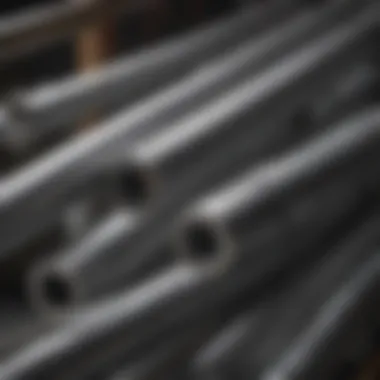
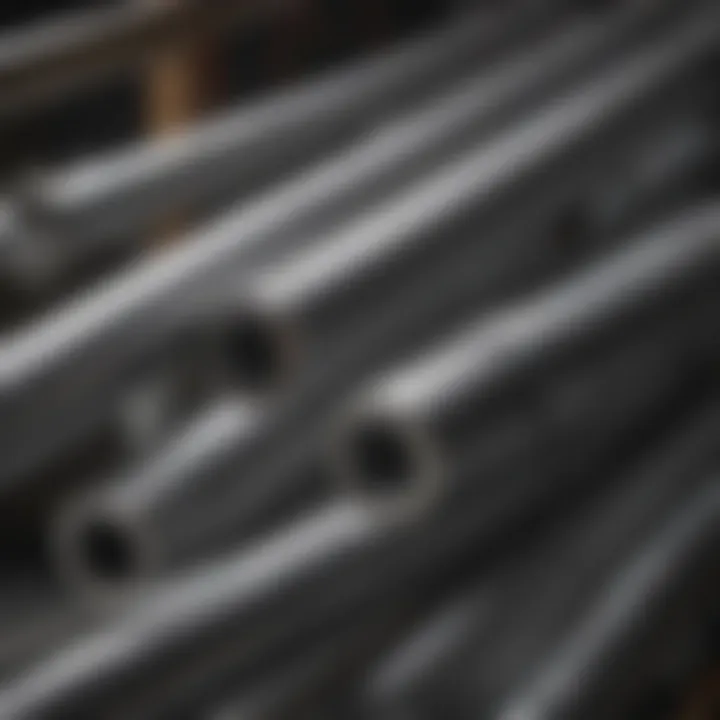
Installation Techniques
Once preparation is in place, it’s time to roll up your sleeves and get to work. How you approach the installation will depend on the type of conduit you’ve chosen and the specifics of the project. Some key techniques include:
- Dry Fitting: Before permanently securing the conduit, perform a dry fit. This trial run allows you to visualize the layout and make necessary adjustments.
- Securing the Conduit: Use either conduit straps or brackets to secure the conduit to walls or other structures. Pay attention to spacing; generally, spacing should not exceed 10 feet apart.
- Bending Techniques: If you need bends in your conduit, consider using a hand bender for steel conduit, ensuring it’s smooth and free of kinks. Bending metal is an art and a science; practice will make it seamless.
- Connecting Sections: When connecting sections of conduit, ensure that you are using appropriate connectors. Threaded, welded, or couplings all have their place, depending on your specific installation needs.
These techniques not only facilitate a smoother installation but also enhance the structural integrity of the conduit system.
Tools and Equipment
Just as a chef requires utensils, so does any installation project require the right tools and equipment. Here’s a list of must-have items for steel conduit installation:
- Conduit Bender: Essential for creating precise bends without damaging the conduit.
- Level: Ensures your installation is straight, which is crucial for both aesthetics and functionality.
- Measuring Tape: Invest in a reliable measuring tape—precision is key.
- Cutting Tools: A hacksaw or recipro saw will help you cut conduit to the desired length.
- Drill: Useful for securing conduit to walls or ceilings, particularly in permanent fixtures.
- Safety Gear: Don’t skimp on safety glasses, gloves, and possibly a hard hat if you're working overhead.
Using the right tools not only streamlines the process but also ensures that safety and efficiency are at the forefront of your project.
"An ounce of prevention is worth a pound of cure."
Maintenance of Steel Conduit
The life expectancy and functionality of steel conduit significantly hinge on proper maintenance practices. For homeowners and housewives, understanding the fundamentals of maintaining steel conduits is essential, not just for the longevity of the installations but also for ensuring safety in electrical and structural applications. Routine upkeep can prevent costly repairs and replacements down the line, making it a vital aspect of home and construction management.
Routine Inspection
Conducting routine inspections is one of the cornerstones of effective maintenance for steel conduit. Inspections should ideally occur at regular intervals based on the installation environment, any potential exposure to harsh conditions, and local building codes.
- Visual Checks: Start with visual inspections to spot any obvious signs of deterioration, corrosion, or physical damage. Small dents or scratches can lead to larger issues if left unaddressed.
- Structural Integrity: Ensure that the conduit is securely attached and that support brackets are not loose or corroded. Loose connections can cause misalignment, which compromises the integrity of the electrical wiring within.
- Electrical Activity Monitoring: Pay attention to any unusual electrical behavior, like flickering lights or equipment malfunction. These may indicate issues related to the conduit's performance.
Performing these inspections can help catch problems before they snowball, saving time and money while improving safety in the home.
"Regular inspection acts as a first line of defense against unforeseen failures. Don't sweat the small stuff; catch it before it becomes a disaster."
Cleaning Procedures
Cleaning steel conduit is another significant aspect of maintenance that shouldn’t be overlooked. Dust, grime, and especially corrosive substances can accumulate over time, compromising both appearance and structural integrity.
- Basic Cleaning: A simple wipe down with a damp cloth can significantly improve the aesthetic and remove dust buildup. For more stubborn marks or residues, a mix of water and mild detergent typically does the trick.
- Corrosion Prevention: Use a wire brush to gently remove any corrosion stains, followed by a clean and dry cloth to wipe away debris. This can help prolong the life of the metal.
- Protective Coatings: After cleaning, it can be beneficial to apply a suitable protective coating. A simple layer of rust inhibitor can serve as a barrier against moisture and contaminants, ensuring your conduit remains robust for many years.
Cleaning might seem trivial, but it is a crucial step that can maximize durability.
Repair Techniques
In the event that inspections reveal damage, knowing how to conduct appropriate repairs is key to maintaining the effectiveness of steel conduit. Delaying repairs can lead to more extensive damage, operational hazards, and increased costs.
- Sealing Joints: If any joints or connections are loose, retightening them immediately can prevent further wear and tear. If threads are stripped, using special repair compounds might be necessary.
- Corrosion Treatment: For rusted areas, employing a rust treatment solution before repainting will stop degradation and restore the surface. Ensure the area is clean and dry before application to maximize efficacy.
- Replacing Sections: Sometimes, the best course of action is to replace severely damaged sections of conduit. Measure the existing conduit and procure replacement pieces that adhere to the same specifications. Make sure to properly seal all joints to avoid future vulnerabilities.
Understanding practical repair techniques not only extends the life of the conduit but also enhances safety throughout the home.
Safety Standards and Compliance
When it comes to construction and electrical installations, safety is the name of the game. Adhering to safety standards and compliance regulations is not just a box to check; it is the backbone of protecting lives and property. This section sheds light on why these regulations are essential, especially concerning steel conduit utilization.
The electric and construction industries are rife with potential hazards. Using steel conduit helps mitigate risks by protecting wiring and preventing electric shocks. Moreover, following safety standards ensures that all installations meet the required specifications from local authorities, which reduces legal liabilities. So, whether you are a seasoned contractor or a homeowner looking to upgrade your electrical system, understanding these standards is paramount.
Building Codes
Building codes are a set of regulations governing the design and construction of buildings, including installations using steel conduit. These codes vary widely from one place to another, reflecting local safety standards, climate considerations, and construction practices. Here are some key points regarding building codes:
- Local Variations: Each municipality often has its codes, requiring builders to stay updated on local regulations. It’s crucial to check which codes apply before starting any project.
- Permit Requirements: Most projects involving steel conduit will likely require building permits, which help ensure compliance during inspections.
- Quality Assurance: Adhering to building codes validates workmanship and material standards. This is especially important in areas prone to natural disasters where strict codes can save lives.
"Not all heroes wear capes; some enforce building codes to keep us safe."
Taking building codes seriously offers several benefits:
- Enhanced safety for occupants and users
- Increased property value through compliance
- Less hassle during resale, as buyers appreciate homes built to code.
National Electrical Code
The National Electrical Code (NEC) is the definitive standard for safe electrical installation in the United States. Knowing the NEC is vital for both professionals and homeowners, and here’s why:
- Scope of Application: The NEC covers a wide range of issues, such as conductor sizing, grounding methods, and where and how to use steel conduit. Failure to comply could have serious consequences, including accidents or damage.
- Regular Updates: The NEC is updated every three years to incorporate new safety technologies and practices. Familiarity with these updates is vital for staying relevant in your field.
- Professional Credibility: For contractors, demonstrating knowledge of the NEC enhances your reputation and builds trust with clients.
Environmental Considerations
When discussing the utility of steel conduit, it’s paramount to examine its environmental impact. This topic holds great importance as we strive for sustainable solutions in both construction and electrical installations. The steel conduit not only provides structural benefits but also plays a role in environmental stewardship.
Sustainability of Materials
Steel conduit is inherently sustainable due to its composition and lifespan. Steel, a ferrous material, is almost infinitely recyclable without losing its properties. This means that even after its initial use, steel conduit can be repurposed for new projects, significantly reducing waste.
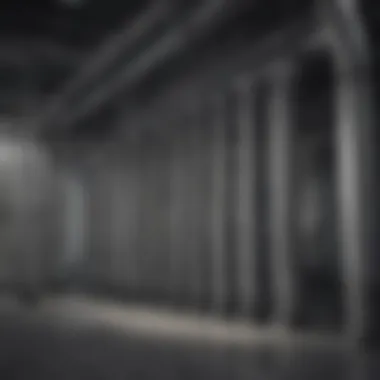
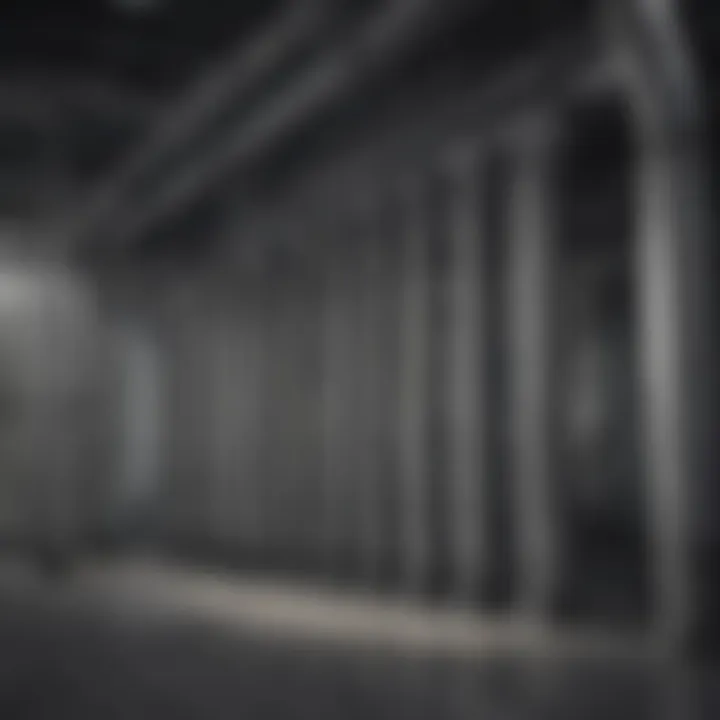
The production of steel today incorporates efforts to minimize the carbon footprint. Modern mills are adopting practices that emphasize energy efficiency, thus lowering emissions during manufacturing. This sustainability aspect often keeps steel as a favored choice for builders and electricians alike.
Additionally, using steel conduit results in durable installations that reduce the need for frequent replacements. Unlike plastic conduits, which may degrade over time and lead to increased waste, steel can last many years, making it a cost-effective option in the long run.
"A sustainable material is one that contributes positively to the environment over its entire lifecycle— from production to disposal."
Recycling of Steel Conduit
The recycling process of steel conduit is both straightforward and beneficial. When steel conduit reaches the end of its service life, it can be collected and sent to scrap yards. Here, it is melted down and reformed into new steel products, conserving natural resources.
Many facilities are set up to handle the recycling of steel effectively. Here are some points to consider about recycling steel conduit:
- Accessibility: Scrap yards are widespread, allowing easy disposal of old conduit.
- Economic Incentives: Many recyclers offer financial incentives for steel, which encourages alternative disposal methods over landfill.
- Reduction of Energy Consumption: Recycling steel uses significantly less energy compared to producing new steel from raw materials, resulting in lesser environmental degradation.
Through proper recycling channels, the life cycle of steel conduit can be extended, contributing to a circular economy where materials are reused and repurposed. The more conscientious we are about recycling, the smaller our collective environmental footprint becomes.
The combination of sustainability during production and the effective recycling processes makes steel conduit a sensible choice for environmentally-aware homeowners and construction professionals.
Applications of Steel Conduit
Steel conduit finds its niche in a variety of applications, embodying utility and versatility across sectors. Whether in construction projects, electrical wiring, or industrial setups, understanding its application can vastly improve safety and longevity of installations. Employing steel conduit not only safeguards electrical lines from physical damage but also enhances the overall aesthetic appeal of spaces. Furthermore, its robust construction ensures a well-organized system, enabling efficient maintenance and troubleshooting.
In Electrical Installations
When it comes to electrical installations, steel conduit shines. It offers a high level of protection against external elements, such as moisture, dirt, and impact. Many builders and electricians opt for rigid steel conduit for outdoor applications, where exposure is a significant concern.
One need only look at commercial buildings where electrical systems are laid out in a tidy manner to appreciate the impact of steel conduit. It keeps wiring safe in a neat, orderly fashion, avoiding the clutter of loose wires that can be both unsightly and dangerous.
There are specific ways to utilize steel conduit effectively:
- Provides Physical Protection: By housing electrical cables, it prevents wear from abrasion and exposure.
- Supports Regulatory Compliance: Many jurisdictions require steel conduit for certain electrical installations, ensuring safety standards are met.
- Facilitates Maintenance: When you need to access electrical wiring, conduit systems allow for easy removal or replacement without damaging surrounding structures.
"A well-installed electrical conduit is like a well-tended garden; it thrives and remains damage-free, reaping benefits for years to come."
Structural Support Systems
Beyond just electrical purposes, steel conduit doubles as a robust structural support system in various projects. In some cases, it can serve both as a conduit for wiring and as a legitimate structural component to bolster walls or frameworks. This dual functionality can save time and offer cost savings in construction.
Consider the following uses in structural support:
- Frame Support: Steel conduits can be utilized to create lightweight, non-combustible frameworks for buildings, providing integral support without compromising on space.
- Safety Measures: By using steel conduit to create barriers or demarcations within workplaces, one can reduce the risk of accidents, delineating hazardous zones effectively.
- Aesthetic Considerations: Exposed conduit systems can be visually striking, fostering an industrial-chic ambiance that some contemporary designs aim for.
Industrial Uses
The industrial landscape benefits greatly from the resilient nature of steel conduits. In heavy-duty environments, like factories and manufacturing plants, the conduit manifests its strength under heavy operational loads, often in harsh conditions. Here are key industrial applications:
- Instrumentation and Control Lines: Steel conduit secures instrumentation wires from fraying or damage, especially in places where machinery runs consistently.
- Power Distribution: Large factories rely on steel conduit to connect power systems, ensuring that high voltages are safely managed across the facility.
- Environmental Adaptability: Steel conduits can withstand extreme temperatures and corrosive environments typical in industrial operations, prolonging lifespan and reducing replacement costs.
In all these applications, steel conduit emerges as a steadfast ally, safeguarding vital systems and enhancing safety. Its ability to serve multiple purposes while maintaining structural integrity exemplifies the advantages of using such material in diverse scenarios.
Future Trends in Steel Conduit
As we look into the horizon of construction and electrical systems, future trends in steel conduit are shaping how we think about infrastructure and sustainability. This isn't just a passing fancy; it's about adapting to a world that demands smarter solutions and more eco-conscious approaches. The increased integration of technology and innovative materials is vital, not just for function but also for efficiency, longevity, and safety in installations. Understanding these trends helps homeowners and builders make informed decisions for their projects.
Smart Conduit Systems
Smart conduit systems represent a significant leap into the future. With the rise of smart homes and the Internet of Things (IoT), steel conduits are starting to get an upgrade. Imagine a conduit that does more than just pass wires; it can monitor electrical systems for faults, manage energy consumption, and even provide real-time data to the homeowner or facility managers.
One of the main benefits of these systems is predictive maintenance. By incorporating sensors within the steel conduits, it's possible to detect wear and tear before a failure occurs. This proactive approach not only saves money but also enhances safety by addressing potential issues early.
Moreover, these smart systems can integrate seamlessly with other smart devices in a home or building, all working together to improve the overall efficiency and functionality.
Innovations in Coatings and Treatments
The next big step involves innovations in coatings and treatments for steel conduits. While steel is certainly strong, it's also susceptible to the elements. New coatings are being developed to enhance corrosion resistance and durability. For example, polymer coatings are becoming popular in various applications. They offer superior protection compared to traditional galvanization, reducing the risk of rust and degradation over time.
This shift not only extends the lifespan of the conduit but also reduces maintenance costs associated with inspections and repairs. In residential applications, homeowners benefit from long-lasting installations that require less frequent attention.
Furthermore, these advanced coatings can be tailored to specific environments, such as coastal areas, where saltwater can wreak havoc on standard steel. By using the right coating, a homeowner can ensure their conduit systems remain robust and reliable, no matter the conditions.
"Innovations in coatings are fundamentally changing how we protect steel conduit, leading to longer-lasting and more reliable installations."
In summary, as we explore future trends in steel conduit, it becomes clear that embracing technology and innovation is crucial. Smart systems and advanced coatings not only increase efficiency but also bring about tangible benefits for homeowners. Understanding these trends prepares us to make informed choices that not only improve infrastructure but also contribute to a sustainable future.
Finale
In summarizing the entire exploration of steel conduit, it's crucial to recognize its pivotal role in modern construction and infrastructure. Steel conduit isn't just a simple pipe; it encapsulates a blend of strength, durability, and versatility that can meet the diverse needs in various applications. For housewives and homeowners looking into electrical safety and organization in their homes, understanding steel conduit provides insight into how best to protect the wiring systems while ensuring optimum performance.
Recap of Key Points
- Versatile Applications: Steel conduit is applicable in several areas, such as electrical installations, industrial settings, and structural support. This flexibility makes it valuable in diverse environments.
- Durability and Longevity: Steel's innate resistance to wear and tear ensures that conduits can withstand harsh conditions. Thus, they present a long-term solution that minimizes the need for repetitive replacements.
"Steel conduit serves a long-lasting purpose, standing firm against time and wear, ensuring safety along the way."
- Installation and Compliance: Homeowners must consider the installation processes and safety standards. Proper knowledge can significantly enhance safety in domestic spaces, reflecting the importance of adhering to local building codes.
- Environmental Benefits: The recyclability of steel conduit underscores its sustainability. For eco-conscious individuals, using steel conduit aligns with environmentally friendly practices.







